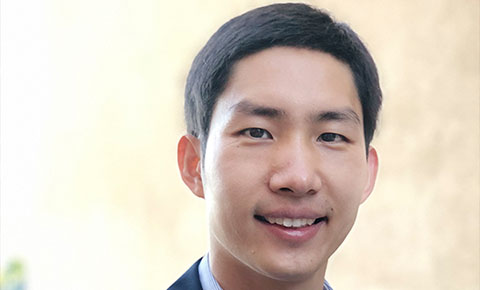SESP Psychologist Named ‘Rising Star’
 Northwestern University developmental psychologist Yang Qu was named a 2020 Rising Star by the Association for Psychological Sciences for his interdisciplinary work examining the role of sociocultural contexts in adolescent development.
Northwestern University developmental psychologist Yang Qu was named a 2020 Rising Star by the Association for Psychological Sciences for his interdisciplinary work examining the role of sociocultural contexts in adolescent development.
The honor recognizes young psychological scientists “whose innovative work has already advanced the field and signals great potential for their continued contributions,” according to the APS.
In addition to Qu, SESP alumna Lindsay Till Hoyt (PhD13), assistant professor of psychology at Fordham University, also was named a 2020 “Rising Star.” SESP assistant professor Terri Sabol, who researches the role of schools and families in healthy child development, received the honor in 2019.
Qu is assistant professor of human development and social policy and faculty associate of Northwestern’s Institute for Policy Research, who studies the experiences of teenagers in the United States and China.
In particular, he investigates psychological and neural mechanisms underlying cultural differences in academic, social, and emotional development. A second line of work examines how parents can influence adolescents’ beliefs, behavior, and brain development. In addition to surveys, observational and experimental methods, he uses neuroimaging to capture what’s happening in the brain.
Helping Teenagers Excel
One study found that efforts to help teenagers see themselves as responsible and thwart common negative stereotypes can help them flourish.
Often characterized as moody, rebellious, and bored by school, teenagers also possess positive and constructive qualities during a time of rapid physical and emotional change, research suggests. The same biological influences that lead to risk-taking and self-destructive behavior can also stimulate positive changes in a supportive environment.
Qu, the study lead author, and his colleagues designed and tested an intervention to debunk the stereotype that teens are irresponsible. They found that middle school youth who participated in the intervention viewed teens as more responsible than their peers and that the counter-stereotyping intervention could be used as a tool to support youth during adolescence, according to the study published online in the journal Child Development.
“Guiding youth to see teens as responsible can help them thrive during adolescence,” said Qu, whose research highlights how important it is to change negative stereotypes about adolescents at both the policy and societal level. “When society begins to view teens more positively, the adolescents themselves may hear more positive messages, which may further promote their development in constructive ways.”
Qu’s most recent study, published last month in the journal Frontiers in Neuroscience, looked at how a mother’s brain activity is related to her teenager’s penchant for risk.
Previous studies have found that children who are closely monitored by their parents do better in school and have lower levels of risky health-related behavior, such as drinking, smoking, unprotected sex and drug use. But no prior research has focused on the parents’ brain, to shed light on the neural patterns of parental monitoring.
In the study, the mothers reported how actively they monitored what their children did and with whom to hang out. Then, using an fMRI scanner, Qu and his colleagues looked at what was happening in the mother’s brain in two different scenarios: as they anticipated their child taking a risk and when they made their own decision in a risky situation. The teenagers also reported on the likelihood that they’d engage in risky practices, such as drinking at a party or stealing.
The researchers found that the brain patterns of mothers who more closely monitored their teenagers were similar, when they were anticipating the child’s decisions and making their own safe decisions. These greater the similarity in brain activity, the lower the likelihood that their children would do risky things.
“These findings provide new insights into parental monitoring, suggesting that mothers who monitor their child’s activities may expect their child to make safe choices in a risk-taking context,” Qu said. “Parental monitoring is more than just trying to know how adolescents would behave, but may also involve expecting their adolescents to engage in safe behavior, as reflected in the similarity of the neural patterns.”
The findings “not only identify what’s going on in the parent’s brain when they’re monitoring their kids, but they also highlight the importance considering the parent’s brain when examining adolescent adjustment,” the researchers wrote in the paper.